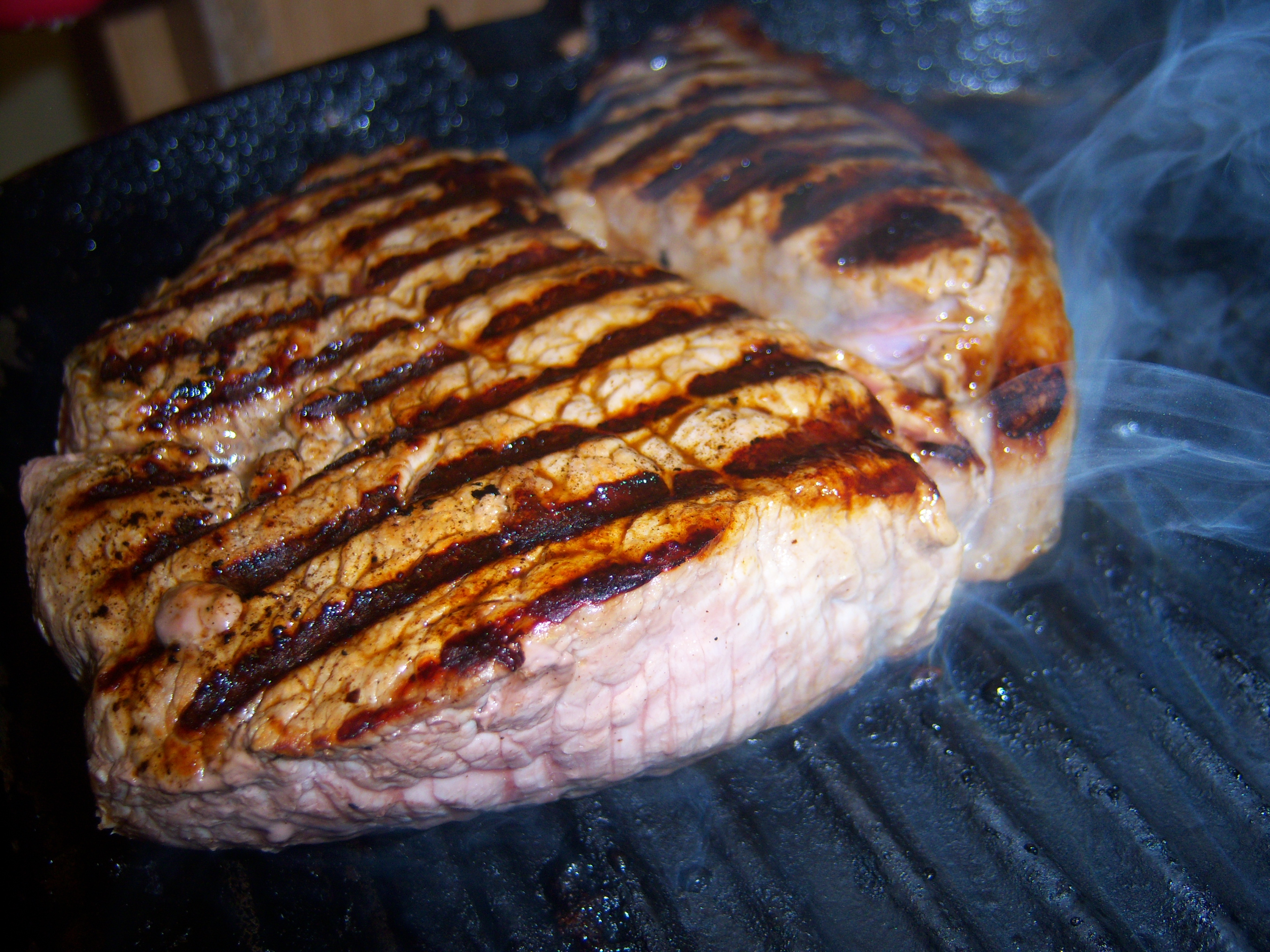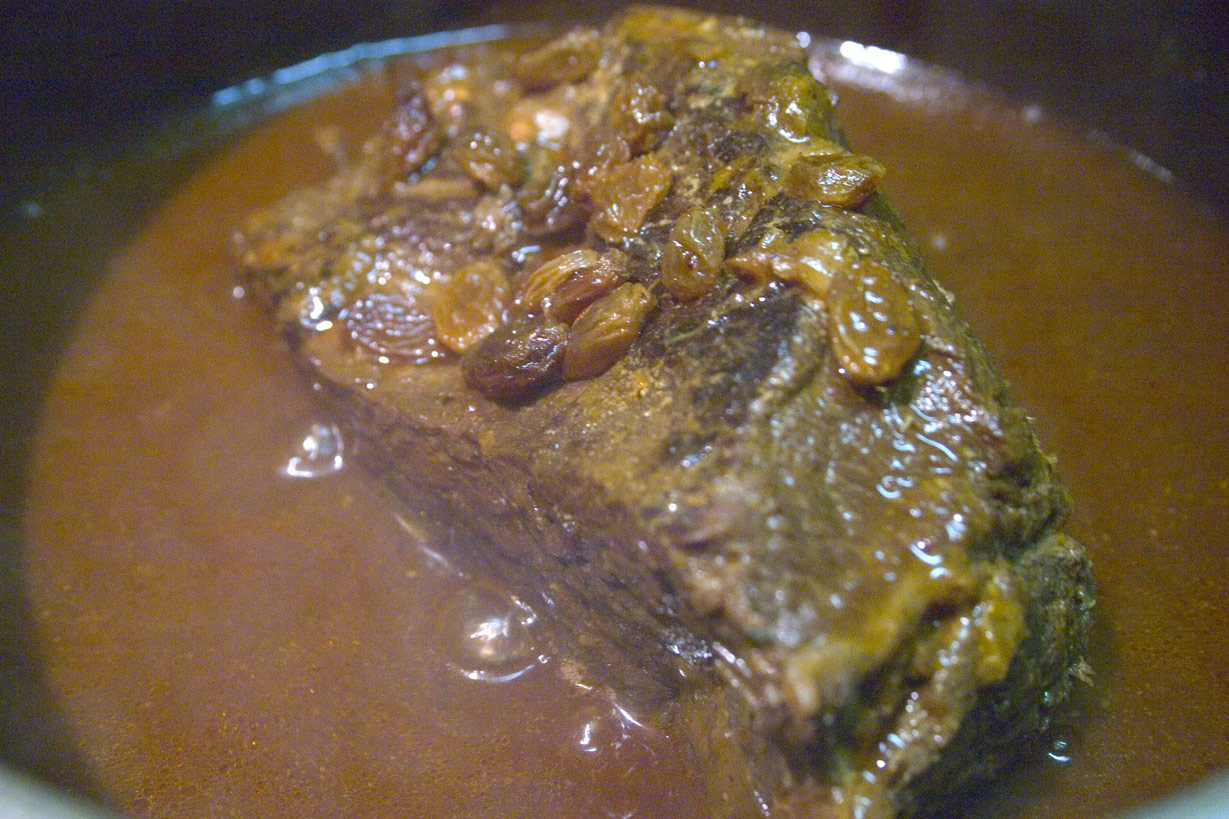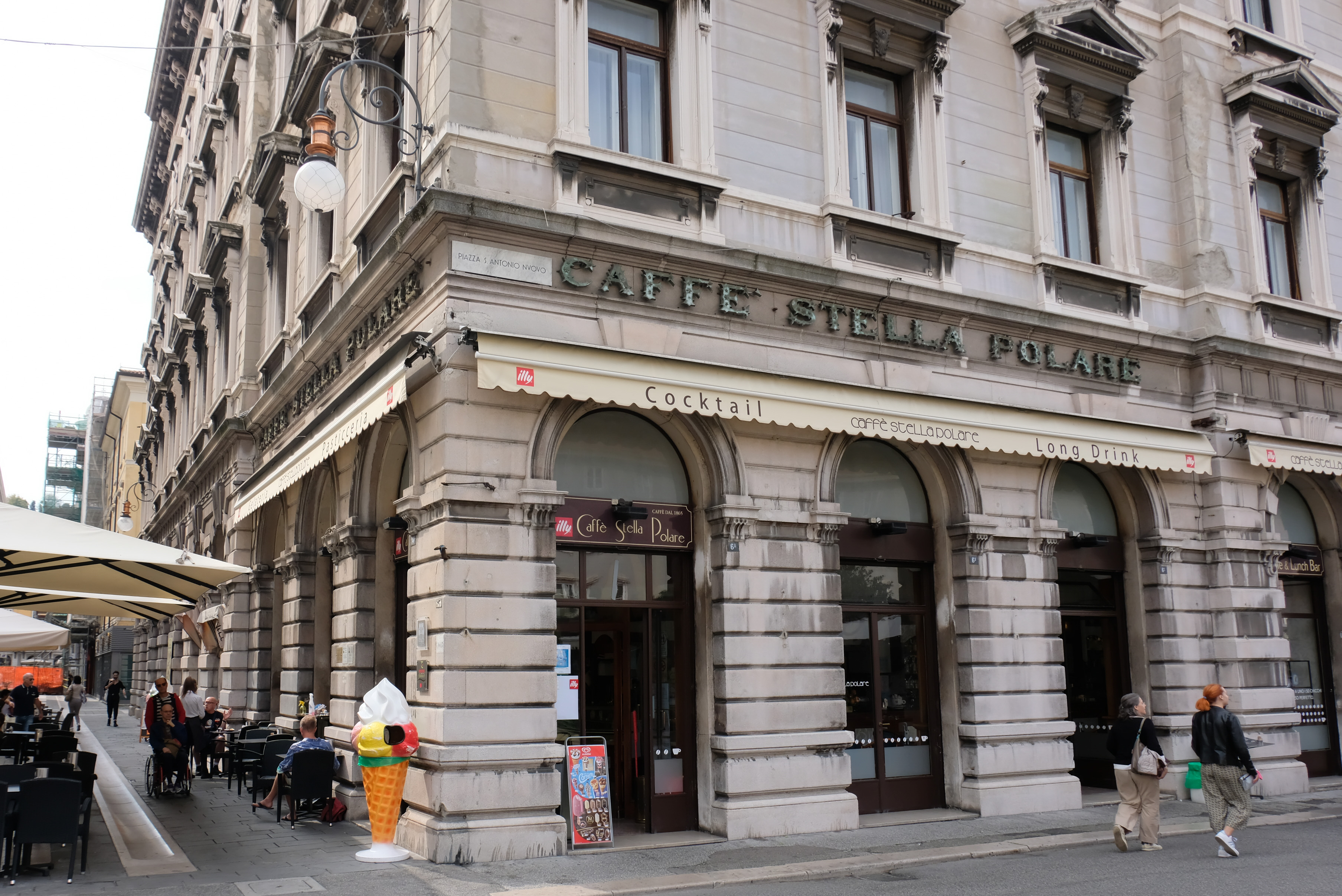|
Spiced Beef
Spiced beef is a form of salt beef, cured with spices and braised or boiled. It is a traditional festive dish in many countries. In England and Wales it has been known for more than 300 years. It remains a traditional Christmas or New Year dish in Ireland. England and Wales Elizabeth David notes that spiced beef has been a familiar dish in English cookery for at least 300 years, sometimes under the name of "Hunting Beef" or "Beef à l'Écarte".David, p. 105 A recipe for spiced beef is given in John Simpson's ''A Complete System of Cookery'' (1806). He comments, "This is more a Christmas dish, than any other time of the year, not but it may be done any time, and is equally good". His recipe calls for only saltpetre, salt and sugar to be rubbed into the meat every few days for three weeks. He does not specify which cut of beef to use. David specifies round or silverside, and to Simpson's ingredients she adds crushed black pepper, allspice berries and juniper berries.David, p. ... [...More Info...] [...Related Items...] OR: [Wikipedia] [Google] [Baidu] |
Salt Beef
Corned beef, called salted beef in some Commonwealth countries, is a salt-cured brisket of beef. The term comes from the treatment of the meat with large-grained rock salt, also called "corns" of salt. Sometimes, sugar and spices are added to corned beef recipes. Corned beef is featured as an ingredient in many cuisines. Most recipes include nitrates, which convert the natural myoglobin in beef to , giving it a pink color. Nitrates and nitrites reduce the risk of dangerous botulism during curing by inhibiting the growth of ''Clostridium botulinum'' bacteria spores, but have been linked to increased cancer risk in mice. Beef cured without nitrates or nitrites has a gray color, and is sometimes called "New England corned beef". Tinned corned beef, alongside salt pork and hardtack, was a standard ration for many militaries and navies from the 17th through the early 20th centuries, including World War I and World War II, during which fresh meat was rationed. Corned beef remains ... [...More Info...] [...Related Items...] OR: [Wikipedia] [Google] [Baidu] |
Rump Steak
Rump steak is a cut of beef. The rump is the division between the leg and the chine cut right through the aitch bone. It may refer to: * A steak from the top half of an American-cut round steak primal * A British- or Australian-cut steak from the rump primal, largely equivalent to the American '' sirloin'' American and British equivalencies The British and Commonwealth English "rump steak" is commonly called " sirloin" in American English or Canadian English. On the other hand, British "sirloin" is called short loin or "porterhouse" by North Americans. French usage Rump steak corresponds roughly to the French cut ''culotte'' (literally 'britches'). The ''pointe de culotte'', the rump cap is highly recommended for braising as ''bœuf à la mode''. In the 20th century the English term ''rump steak'' was adopted, although with modified orthography ''romsteak'' or ''romsteck''. The spelling ''rumsteak'' is also attested.''Le Petit Larousse'', Larouss, Paris, 1994 See ... [...More Info...] [...Related Items...] OR: [Wikipedia] [Google] [Baidu] |
Brine
Brine (or briny water) is a high-concentration solution of salt (typically sodium chloride or calcium chloride) in water. In diverse contexts, ''brine'' may refer to the salt solutions ranging from about 3.5% (a typical concentration of seawater, on the lower end of that of solutions used for brining foods) up to about 26% (a typical saturated solution, depending on temperature). Brine forms naturally due to evaporation of ground saline water but it is also generated in the mining of sodium chloride. Brine is used for food processing and cooking (pickling and brining), for de-icing of roads and other structures, and in a number of technological processes. It is also a by-product of many industrial processes, such as desalination, so it requires wastewater treatment for proper disposal or further utilization (fresh water recovery). In nature Brines are produced in multiple ways in nature. Modification of seawater via evaporation results in the concentration of salts in th ... [...More Info...] [...Related Items...] OR: [Wikipedia] [Google] [Baidu] |
Sauerbraten
Sauerbraten () is a traditional German roast of heavily marinated meat. It is regarded as a national dish of Cuisine of Germany, Germany, and is frequently served in German-style restaurants internationally. It can be cooked from a variety of meats, most often from beef, but also from chicken, lamb and mutton, pork and horse meat, horse.Sheraton 1965, p. 147.Kummer 2007, p. 553. Before cooking, the raw meat is marinated for 5 to 15 days in a mixture of wine or vinegar, water, herbs, spices, and seasonings. Usually, tougher cuts of meat, such as rump roast or bottom round of beef, are used, and the long marinating tenderizes the meat. A Sauerbraten dinner is almost always accompanied by a hearty gravy resulting from its roasting and is most often served with potato pancakes (''Kartoffelpuffer''), potato dumplings (''Knödel, Kartoffelklöße''), or ''Spätzle''.Saekel 2005, F-5. Ingredients used in the marinade, and accompaniments served with sauerbraten, vary across regions. Re ... [...More Info...] [...Related Items...] OR: [Wikipedia] [Google] [Baidu] |
Pastrami
Pastrami is a type of cured meat originating from Romania usually made from beef brisket. The raw meat is brined, partially dried, seasoned with herbs and spices, then smoked and steamed. Like corned beef, pastrami was created as a way to preserve meat before the invention of refrigeration. One of the iconic meats of Eastern European cuisine as well as American Jewish cuisine and New York City cuisine, hot pastrami is typically served at delicatessen restaurants on sandwiches such as the pastrami on rye. Etymology and origin The name pastrami likely comes from the Romanian verb "a păstra", meaning to preserve or to keep, referencing a traditional method of meat preservation prevalent before refrigeration. Ultimately, it was probably derived from the Turkish pastirma. Pastrami was introduced to the United States in a wave of Jewish immigration from Bessarabia and Romania in the second half of the 19th century, with the Yiddish ''pastrame''. The modified "pastrami" spelli ... [...More Info...] [...Related Items...] OR: [Wikipedia] [Google] [Baidu] |
Cork (city)
Cork ( ; from , meaning 'marsh') is the second-largest city in Republic of Ireland, Ireland, the county town of County Cork, the largest city in the Provinces of Ireland, province of Munster and the List of settlements on the island of Ireland by population, third largest on the island of Ireland. At the 2022 census of Ireland, 2022 census, it had a population of 224,004. The city centre is an island between two channels of the River Lee (Ireland), River Lee which meet downstream at its eastern end, where the quays and Dock (maritime), docks along the river lead outwards towards Lough Mahon and Cork Harbour, one of the largest natural harbours in the world. Cork was founded in the 6th century as a monastic settlement, and was expanded by Vikings, Viking invaders around 915. Its charter was granted by John, King of England, Prince John in 1185 in Ireland, 1185. Cork city was once fully walled, and the remnants of the old medieval town centre can be found around South and North M ... [...More Info...] [...Related Items...] OR: [Wikipedia] [Google] [Baidu] |
The Dead (Joyce Short Story)
"The Dead" is the final short story in the 1914 collection ''Dubliners'' by James Joyce. It is by far the longest story in the collection and, at 15,952 words, is almost long enough to be described as a novella. The story deals with themes of love and loss, as well as raising questions about the nature of the Irish identity. The story was well-received by critics and academics and described by T. S. Eliot as one of the greatest English-language short stories ever written. It was later adapted into a one-act play by Hugh Leonard and into the 1987 film ''The Dead (1987 film), The Dead'' written by Tony Huston and directed by John Huston. Characters * Gabriel Conroy – the main character of the story. * Kate Morkan and Julia Morkan – Gabriel and Mary Jane's aunts. They are elderly sisters who throw a party every year during Christmas time. * Mary Jane Morkan – niece of Kate and Julia Morkan. * Lily – the caretaker's daughter. * Gretta Conroy – Gabriel's wife. * Molly Ivo ... [...More Info...] [...Related Items...] OR: [Wikipedia] [Google] [Baidu] |
James Joyce
James Augustine Aloysius Joyce (born James Augusta Joyce; 2 February 1882 – 13 January 1941) was an Irish novelist, poet, and literary critic. He contributed to the modernist avant-garde movement and is regarded as one of the most influential and important writers of the twentieth century. Joyce's novel ''Ulysses (novel), Ulysses'' (1922) is a landmark in which the episodes of Homer's ''Odyssey'' are paralleled in a variety of literary styles, particularly stream of consciousness. Other well-known works are the short-story collection ''Dubliners'' (1914) and the novels ''A Portrait of the Artist as a Young Man'' (1916) and ''Finnegans Wake'' (1939). His other writings include three books of poetry, a play, letters, and occasional journalism. Born in Dublin into a middle-class family, Joyce attended the Jesuit Clongowes Wood College in County Kildare, then, briefly, the Congregation of Christian Brothers, Christian Brothers–run O'Connell School. Despite the chaotic family li ... [...More Info...] [...Related Items...] OR: [Wikipedia] [Google] [Baidu] |
Rowley Leigh
Rowley Leigh (born 23 April 1950) is a British chef, restaurateur and journalist who lives in Shepherd's Bush, London. Born in Manchester, Leigh attended Rushmoor school in Bedford before going to Clifton College and Christ's College, Cambridge in 1968. After Cambridge he tried his hand at farming and novel writing before falling into cooking "almost by accident" in 1977. After a couple of years at the Joe Allen restaurant, Leigh went to work with the Roux brothers at Le Gavroche in 1979. After stints at Le Gavroche and the brothers' pastry laboratory, and, becoming buyer for the group, he took over their Le Poulbot restaurant as head chef in 1984, receiving ''The Times'' "Restaurant of the Year" award in 1986. He opened Kensington Place restaurant with Nick Smallwood and Simon Slater in 1987, and was rewarded with the title of "Bargain Restaurant of the Year" by ''The Times'' in 1988. In the same decade, Leigh started a career as a cookery writer, winning the Glenfiddich awa ... [...More Info...] [...Related Items...] OR: [Wikipedia] [Google] [Baidu] |
Chutney
A chutney () is a spread typically associated with cuisines of the Indian subcontinent. Chutneys are made in a wide variety of forms, such as a tomato relish, a ground peanut garnish, yogurt, or curd, cucumber, spicy coconut, spicy onion, or mint dipping sauce. Etymology The word ''chutney'' derives from Hindustani/Urdu (Nastaliq: چٹنی, Devanagari: चटनी) ''chaṭnī'', deriving from चाटना ''chāṭnā'' 'to lick' or 'to eat with appetite'. In India, ''chutney'' refers to fresh and pickled preparations indiscriminately; however, several Indian languages use the word for fresh preparations only. Overview In India, chutneys can be either made alongside pickles that are matured in the sun for up to two weeks and kept up to a year or, more commonly, are freshly made from fresh ingredients that can be kept a couple of days or a week in the refrigerator. In South India, Chutneys are also known as ''Pachadi'' (, , , , ) which generally refers to t ... [...More Info...] [...Related Items...] OR: [Wikipedia] [Google] [Baidu] |
Stout (beer)
Stout is a type of dark beer that is generally Brewing#Warm fermenting, warm fermented, such as #Dry stout, dry stout, #Oatmeal stout, oatmeal stout, #Milk stout, milk stout and #Imperial stout, imperial stout. Stout is a type of ale. The first known use of the word "stout" for beer is in a document dated 1677 in the Egerton Manuscripts, referring to its Beer measurement#Strength, strength. Porter (beer), Porters were brewed to a variety of strengths, with the stronger beers called "stout porters". The history and development of stout and porter are thus intertwined.''The New Oxford Dictionary of English''. Oxford University Press 1998 Porter and Stout – CAMRA Web.archive.org History Porter (beer), Porter originated in London, England in the early 1720s. The ...[...More Info...] [...Related Items...] OR: [Wikipedia] [Google] [Baidu] |
Guinness
Guinness () is a stout that originated in the brewery of Arthur Guinness at Guinness Brewery, St. James's Gate, Dublin, Ireland, in the 18th century. It is now owned by the British-based Multinational corporation, multinational alcoholic beverage maker Diageo. It is one of the most successful alcohol brands worldwide, brewed in almost 50 countries, and available in over 120. Sales in 2011 amounted to 850,000,000 litres (190,000,000 imp gal; 220,000,000 U.S. gal). It is the highest-selling beer in both Ireland and the United Kingdom. The Guinness Storehouse is a tourist attraction at Guinness Brewery, St. James's Gate Brewery in Dublin, Ireland. Since opening in 2000, it has received over 20 million visitors. Guinness's flavour derives from malted barley and roasted unmalted barley; the unmalted barley is a relatively modern addition that became part of the grist in the mid-20th century. For many years, a portion of aged brew was blended with freshly brewed beer to give a sharp ... [...More Info...] [...Related Items...] OR: [Wikipedia] [Google] [Baidu] |









